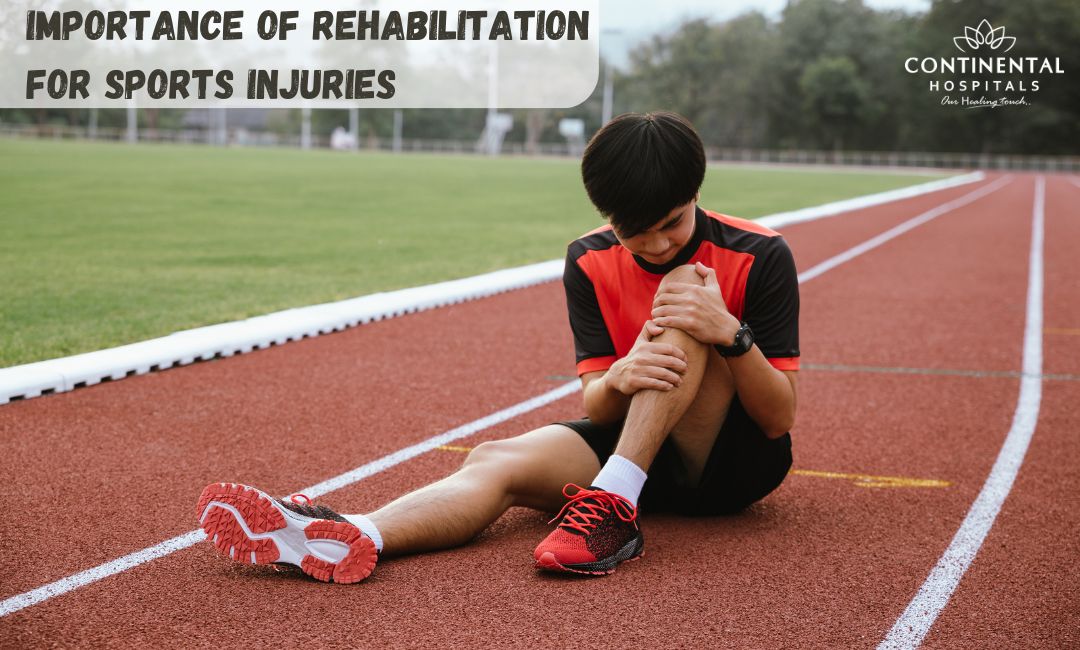Sports injuries can be a setback for athletes and fitness enthusiasts alike. Whether it's a sprained ankle, a torn ligament, or muscle strain, these injuries can keep you off the field, track, or gym for longer than you'd like. That’s where sports rehabilitation comes in. It plays a crucial role in recovery, helping you return to your favorite activities stronger and more resilient than before. In this blog, we'll explore the importance of sports rehabilitation, its objectives, types of exercises involved, benefits, and much more.
The Importance of Sports Rehabilitation
Sports rehabilitation is essential for anyone recovering from an injury related to physical activities. The primary aim is to restore your body to its optimal state, enabling you to perform at your best. Rehabilitation helps reduce pain, regain strength, and improve mobility. It is not just about healing; it’s also about ensuring that you can return to your sport safely and effectively.
The Main Objectives of the Sports Rehabilitation Process
Pain Management: The first step in rehabilitation often involves reducing pain and inflammation. This might include physical therapy techniques, ice therapy, or medications.
Restoration of Range of Motion: Once pain is under control, the focus shifts to improving flexibility and range of motion in the injured area. This is crucial to ensure you can move freely without restrictions.
🥗 Healthy Plate Challenge
🍽 Add Your Favorite Dish
Pick Your 6 favorite foods, eat, and see the results.Drag & drop foods onto your plate.
Drop Food Here
Strengthening: After regaining mobility, the next objective is to strengthen the injured area. Targeted exercises help rebuild muscle strength, making it less likely for the injury to recur.
Functional Training: This phase involves simulating the specific movements related to your sport. It helps prepare your body for the demands of physical activity, reducing the risk of re-injury.
Education and Prevention: Educating athletes about injury prevention and proper techniques is vital for long-term success. Learning how to avoid future injuries can significantly extend your athletic career.
Types of Sports Rehabilitation Exercises
Sports rehabilitation includes various exercises tailored to the individual's needs. Here are some common types:
Stretching Exercises: These help improve flexibility and range of motion. Gentle stretching can ease stiffness and enhance mobility.
Strength Training: Resistance exercises focus on rebuilding strength in the injured area. This may involve weights, resistance bands, or bodyweight exercises.
Balance and Coordination Drills: These exercises enhance stability and proprioception, which are critical for preventing falls and further injuries.
Cardiovascular Conditioning: Engaging in low-impact aerobic exercises helps maintain overall fitness without putting too much strain on the injured area.
Functional Movement Training: This focuses on specific movements related to your sport, helping you regain the skills necessary for performance.
The Goal of Sports Rehabilitation
The ultimate goal of sports rehabilitation is to facilitate a safe and effective return to your sport or activity. This means not just healing the injury but also enhancing your overall performance. Rehabilitation programs are designed to ensure that athletes are not only physically prepared but also mentally ready to return to competition. With the right approach, you can come back stronger and more resilient than before.
The Sports Rehabilitation Process
The sports rehabilitation process typically involves several stages:
Assessment: A thorough evaluation of the injury is performed by a qualified professional. This helps determine the extent of the injury and the appropriate rehabilitation plan.
Treatment Plan Development: Based on the assessment, a personalized rehabilitation program is created, focusing on your specific needs and goals.
Implementation: The rehabilitation exercises and treatments are carried out under the guidance of trained professionals. Progress is monitored closely.
Reevaluation: Regular check-ins and assessments are conducted to monitor your recovery and adjust the treatment plan as necessary.
Return to Sport: Once you have regained strength, flexibility, and confidence, you can safely return to your sport, often with the help of functional training to ensure readiness.
Sports Rehabilitation Benefits
The benefits of sports rehabilitation extend beyond just recovery. Here are some key advantages:
Faster Recovery: A structured rehabilitation program can significantly speed up recovery times compared to not undergoing rehabilitation.
Injury Prevention: Learning proper techniques and conditioning can help prevent future injuries, ensuring a longer, healthier athletic career.
Improved Performance: Rehabilitation often focuses on enhancing strength and flexibility, which can lead to better overall performance in your sport.
Mental Resilience: The rehabilitation process can also help athletes build mental toughness, boosting their confidence and reducing fear of re-injury.
Enhanced Quality of Life: By regaining mobility and strength, you can return to the activities you love, leading to a happier and healthier lifestyle.
Top 10 Medical Conditions Treated with Sports Rehabilitation
Sports rehabilitation can address a variety of medical conditions, including:
- Sprains and Strains
- Tendonitis
- Fractures
- Ligament Injuries (e.g., ACL tears)
- Shoulder Injuries
- Lower Back Pain
- Tennis Elbow
- Plantar Fasciitis
- Patellar Tendonitis
- Hip Injuries
Can Sports Rehabilitation Improve Overall Health and Fitness?
Absolutely! While sports rehabilitation is primarily focused on recovery from injuries, it can also enhance overall health and fitness. The exercises involved can improve cardiovascular fitness, strength, and flexibility, contributing to a healthier lifestyle. Moreover, rehabilitation promotes the importance of physical activity, encouraging individuals to stay active and engaged in their fitness journeys.
The Best Sports Rehabilitation Center in Hyderabad - Continental Hospitals
If you're in Hyderabad and seeking top-notch sports rehabilitation services, look no further than Continental Hospitals. They offer state-of-the-art facilities and a team of experienced professionals dedicated to helping you recover from sports injuries effectively. Their personalized rehabilitation programs are designed to meet individual needs, ensuring you receive the best care possible. With a focus on both recovery and performance, Continental Hospitals is your partner in getting back to your best self.
In conclusion, sports rehabilitation is an essential part of recovering from injuries, helping athletes return to their activities stronger and healthier. By understanding the process, benefits, and types of exercises involved, you can make informed decisions about your recovery. Whether you're a professional athlete or a weekend warrior, investing in sports rehabilitation can help you achieve your fitness goals and maintain a healthy lifestyle.
Related Blogs:
.webp)














